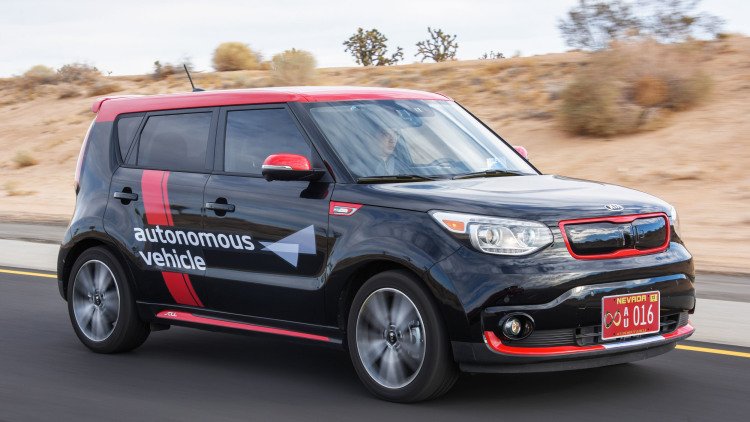The new branding will encompass all of the company's advanced driver assistance systems and innovations in the human-machine interface over the next 15 years.
Before Kia's fully driverless vehicle hits the street, the company thinks that partially autonomous Drive Wise technology could be ready by 2020. These early steps are largely what the company has on display at CES. Tech like Highway Autonomous Driving and Urban Autonomous Driving use sensors and GPS to allow a model to control itself. An Emergency Stop System can automatically get the car off the road if there's a problem, and an electronic valet would even allow a vehicle to park without a driver inside.
Kia took a major step toward its autonomous future in December 2015 when it received permission from Nevada to test driverless tech on public roads there with a Soul EV (pictured above). The company and Hyundai have also pledged $2 billion in research through 2018 to help bring these advanced systems into production.
Kia also folds future in-vehicle tech under the Drive Wise branding, and its I-Cockpit concept shows some of these solutions off at CES. This demonstrator of a next-gen vehicle cabin supports gesture controls and can detect an owner's fingerprint to adapt the interior to the person's preferred music and climate settings.
Autonomous tech is one of the hottest parts of the auto industry right now, and a host of companies are ready to challenge Kia's coming innovations. For example, General Motors plans to test a network of driverless vehicles with ridesharing service Lyft, and Ford and Google might form a similar partnership. BMW also could show of a concept with a nearly production-ready solution early in 2016.



